Day 3 of our trip proved to be quite a long and demanding one, but one which saw us achieving some sightseeing goals, though really all of it has been a goal.
As one does when travelling, we are noticing differences from home (that is, from the southeast of Australia versus this western part). It seems, for example, that everything is bigger or faster here – a bit like Texas is for the USA! Today, we passed a windfarm and couldn’t believe the size of the windmills. They seem to grow bigger here. And we are noticing that the speed limits here are more generous. Roads which we believe would be 100kph in the southeast are 110kph here, but more interesting is the difference in roadworks speed limits. In our recent experience in the east, roadworks speed limits end up at 40kph wherever the lanes are reduced or a lot of action is happening, but today we passed through an area where the road was reduced to one lane, shared for both directions, and the speed was 60kph. Seemed reasonable to us, actually, but very different to the crawl we are used to!
And speaking of roads – both tarred and dirt – they have been excellent, with few pot holes in the tarred roads, and the dirt ones have been wide, hard and well-graded, despite all the recent rain. Impressive.
We’ve noticed that we are not seeing the name of the local First Nations country in the town welcome signs here, as we are increasingly seeing in the areas we travel through in New South Wales and Victoria. I guess it will come.
Finally, three days in, we are feeling that the areas we have been visiting seem surprisingly quiet for spring wildflower season. And York, particularly so, given it is just an hour’s drive from Perth. York is beautifully set up for tourists, with a good website and excellent printed guides, and yet few people (besides a big cycling group).
But enough preamble, I’ll get onto what we did and saw …
Walking tour of York
We started off the day with a quick breakfast, followed by a self-guided walking tour of York’s main street. York grew on the back of agriculture and Western Australia’s 1890s gold rush. It reminded us of Ballarat (and Bendigo) in Victoria, except that with their goldrush being 1850s, their historical buildings date back to the earlier Victorian era than the later Victorian and Edwardian styles of York. The main street is lined with buildings constructed between the 1890s and 1910s, and they are generally beautifully maintained. The Town Hall and the Courthouse are particularly gorgeous.
Quick cuppa in Toodyay
Our morning cuppa stop was Toodyay, which we understand is an anglicisation of the Nyungar word for the region, Duidgee, which might help you with the pronunciation. It was apparently known as Newcastle between 1860 and 1910. Glad they got rid of that. You can have too many Newcastles, I reckon. It is also on the Avon River, like York, and is in the Wheatbelt region. If you are into bushrangers, you might like to know that in the 1860s it was home to bushranger Moondyne Joe.
Anyhow, moving along … not long out of Toodyay, we noticed more wildflowers on the side of the road, and decided to stop and investigate. What a great decision that was. We’d stopped because of some large shrubs we’d been seeing, but where were stopped we found many different wildflowers, many of them tiny, tiny. We spent nearly half an hour looking at them, photographing them, and just being overall astonished at their variety and beauty. (I haven’t identified them all fully yet.)
Mogumber and the Moore River Native Settlement
Having read and seen so much about the Moore River mission (renamed the Mogumber Native Mission in 1951) – including via Doris Pilkington’s memoir and movie, The Rabbit-Proof Fence – I wanted to check it out. Visiting it involved us in a round-trip detour of about 25 kms and it was a strange a experience because, clearly, people aren’t encouraged to go there. The directional signage is minimal – and certainly not in the brown colour traditionally used for natural and historical sites – and the road in is comparatively poor. Once you get there, you are asked to check in at the Caretaker’s house. At this point we decided that it was not a place for tourists so we turned around and left. There is, however, a sign near the entry which describes it as a “Stolen Generation site”. That was good to see, at least.
New Norcia
Our next stop was a place that also has a difficult First Nations history, New Norcia. It is Australia’s only monastic town, and is a place I’ve wanted to visit for a long time. I recently read Alf Taylor’s memoir, God, the devil and me, which tells a tough story of life there in the 1950s and 60s for a First Nations boy.
The mission was established by 7 Benedictine monks, led by Rosendo Salvado, from Spain in 1847. (The Benedictines have a history going back to the 4th century.) In its heyday, New Norcia had some 60 or so monks but these days it is down to 6, ranging in age from 40s to 80s. Len and I were interested to see it for multiple reasons, one of which was that we have visited many of the Spanish missions in California. Those are Franciscan and were established by Father Junipero Serra, the first one being Mission San Diego de Alcala in 1769.
We arrived around lunch-time – and bought a delicious lunch of chicken and vegetable soup at the roadhouse, before doing the 2-hour guided walking tour of the “town”. It was a wonderfully informative tour given by a Scottish-born woman who is part of the New Norcia community. I’m not sure I fully understand the set-up there, but I’ll share what I understood.
Over the years, the monastery has been self-sufficient, drawing on agriculture, education and hospitality which are three prongs of Benedictine life. They made their own flour until 2009, and still make olive oil, beer and some other products. These days, however, the monastery is re-inventing itself because, we were told, the current monks don’t farm and the school has gone (given they never were professional teachers). The only thing left to them, for funding/maintaining the monastery, is hospitality and tourism (which includes offering school programs). I didn’t ask about how it is all formally managed, given the current monks seem to spend their life in spiritual work and prayer, rather than in undertaking anything that might actually support them.
The buildings are impressive, like many old buildings are. The hard work and ingenuity needed to create establishments like this always fascinate me. But, of course, New Norcia has its dark side, and while this was clearly mentioned and acknowledged – particularly the abuse of children as revealed in the recent Royal Commission into Institutional Abuse of Children – I would love to have had more of the local First Nations’ perspective. Nyungar people still live in the area, including on-site, and their relationship with the mission/monastery is an interesting and complicated one. However, the interpretation we got was the white/settler perspective.
Cervantes
We left New Norcia at 3.30pm and after a bit of a detour through a little GPS mismanagement – that had a local cocky scratching his head about why we were where we were – we arrived in Cervantes just after 6pm. The detour did, however, have an up side as it resulted in our seeing the biggest wind farm windmills we’ve ever seen. Len, in particular, was fascinated.
We self-checked into our “resort” room at Pinnacles Edge Resort, and went to the Cervantes Bar and Bistro for dinner where we had a delicious seafood meal, starting with a Seafood Taster entree for two – gluten-free, and with Spanish mackerel, prawns, scallops and calamari – followed by a whole grilled lobster which we shared. Like the places we ate at in York the previous two nights, it was busy – but, we wonder, where are all those people during the day?

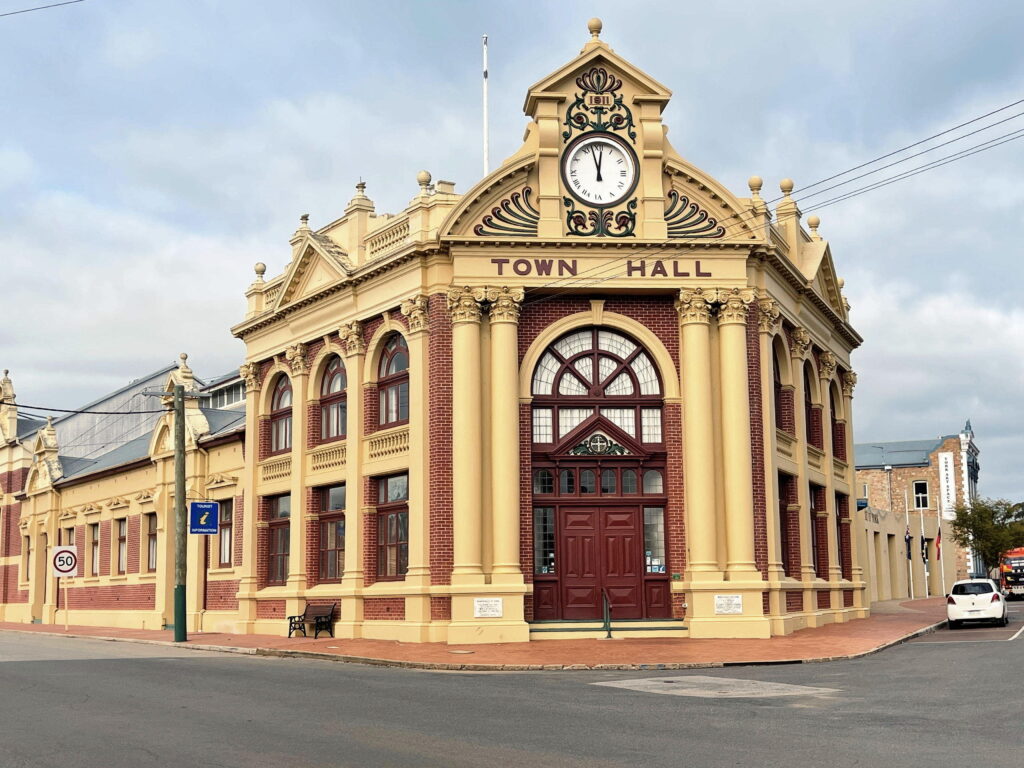
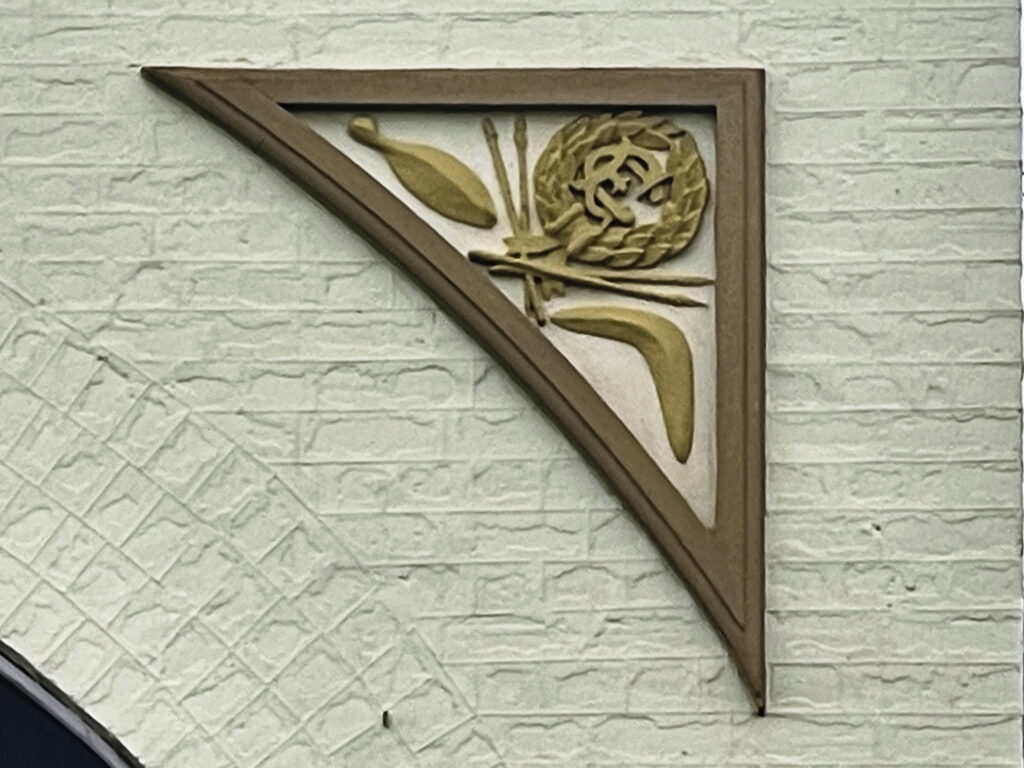
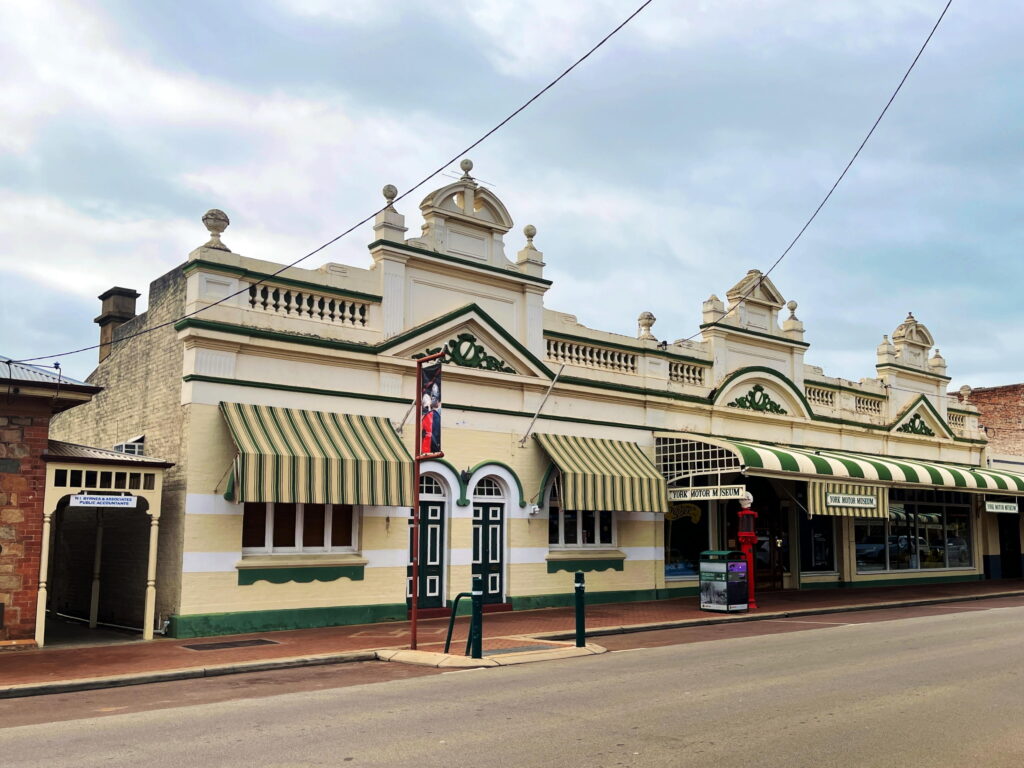
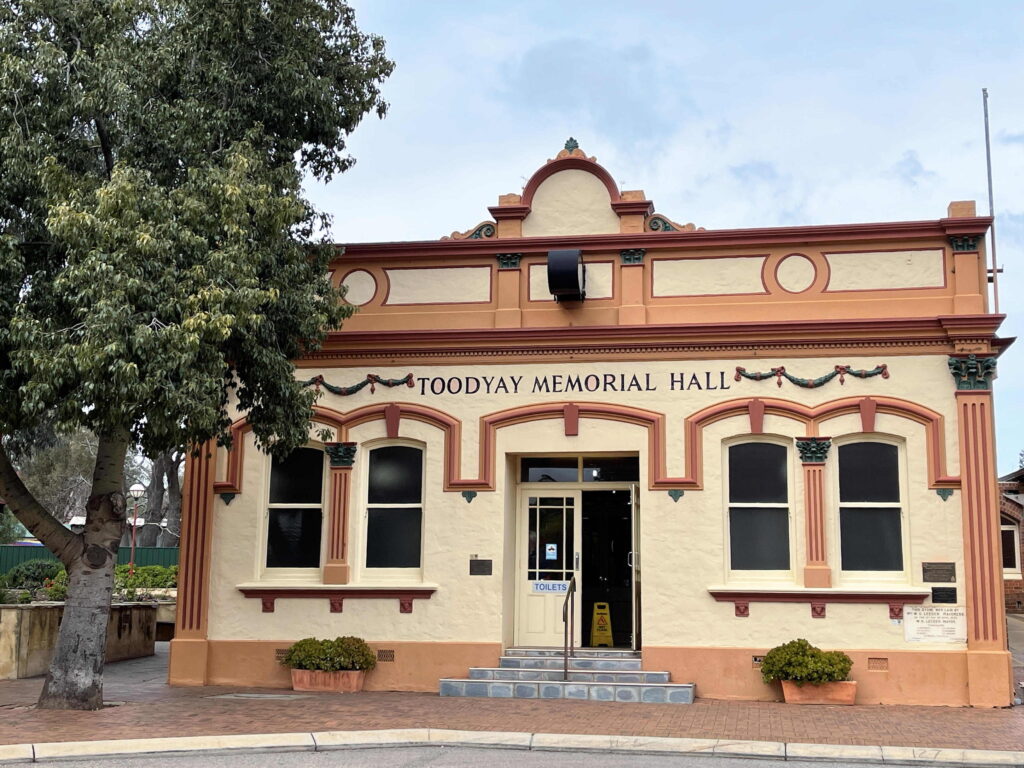
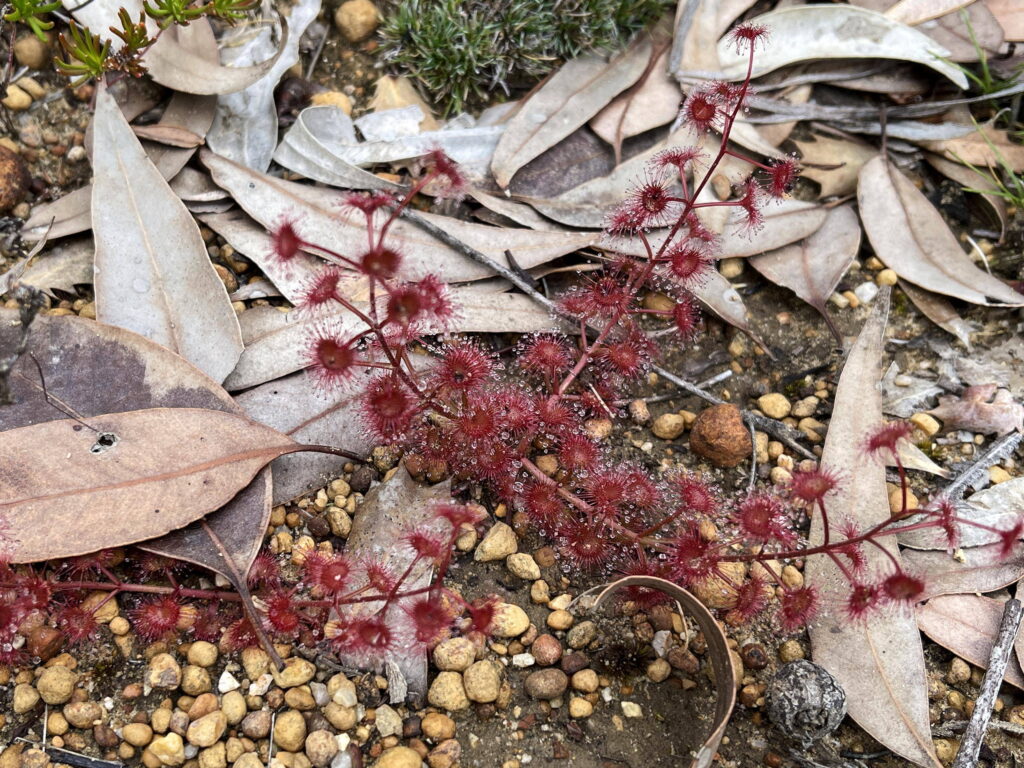
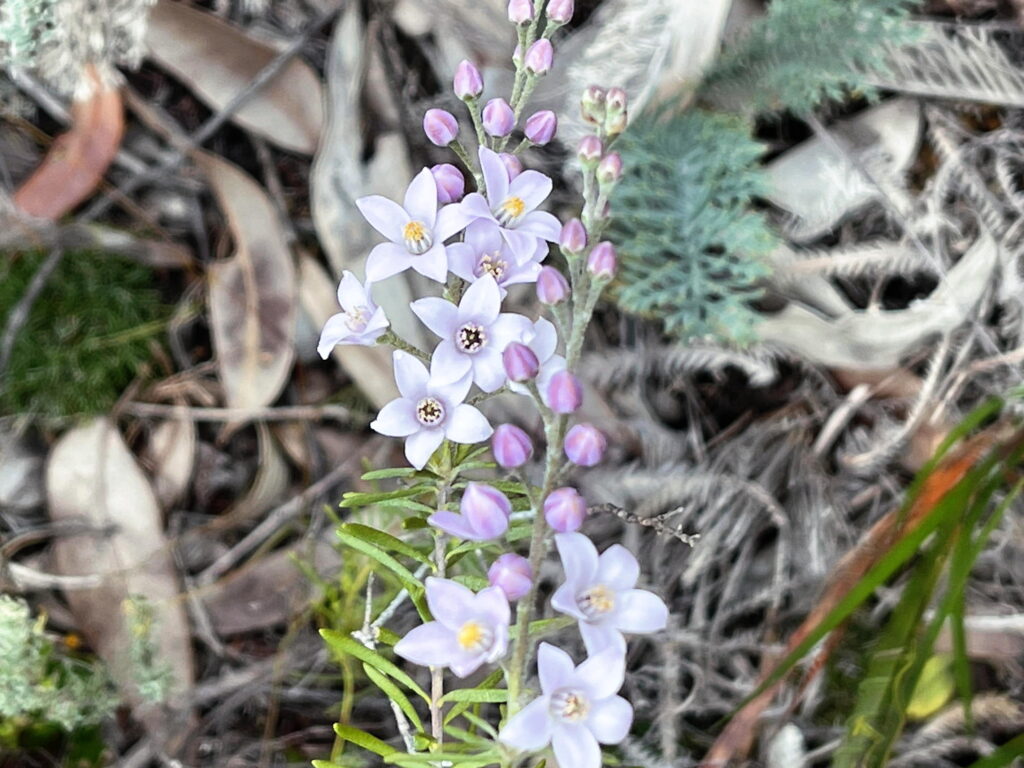
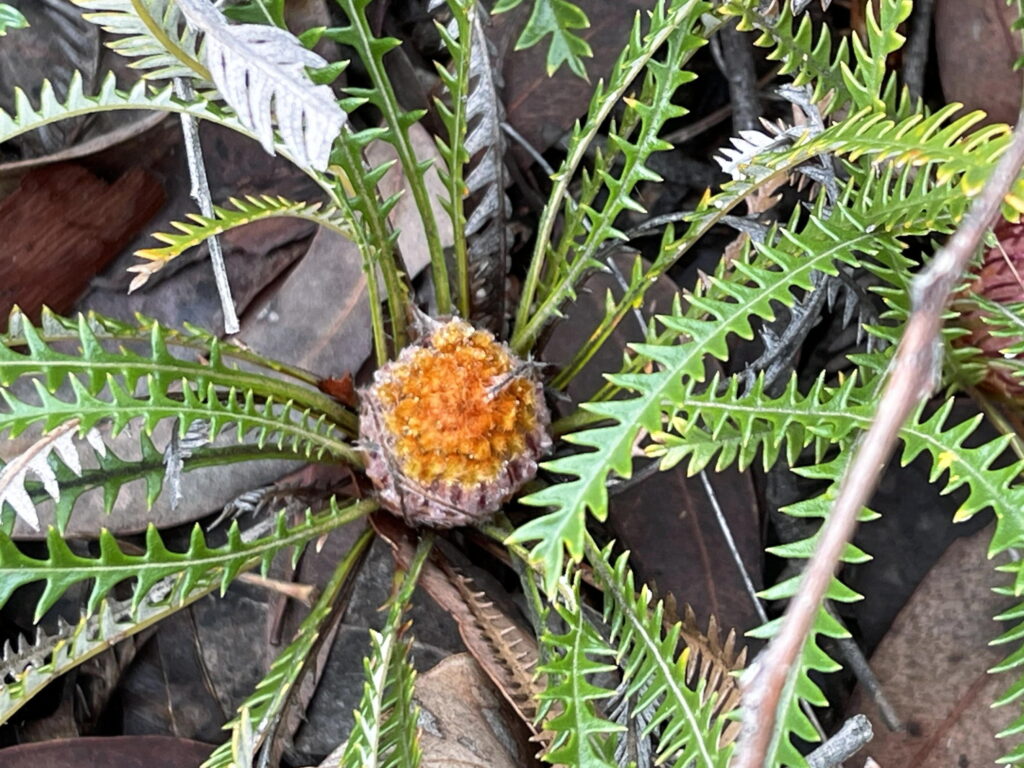
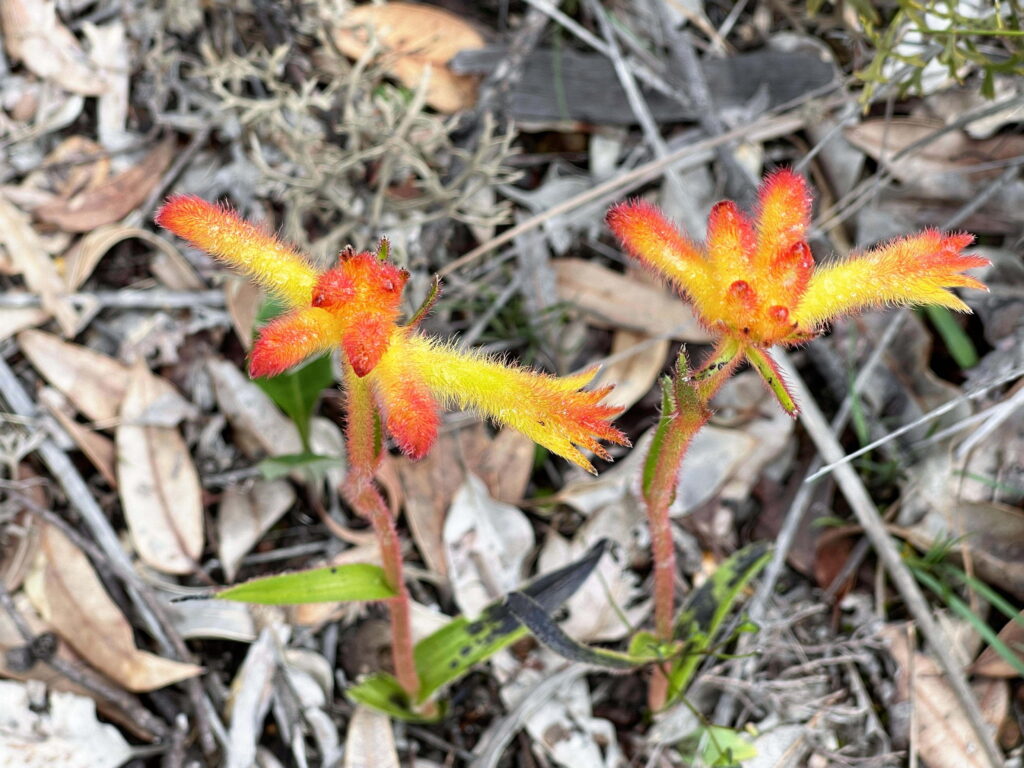
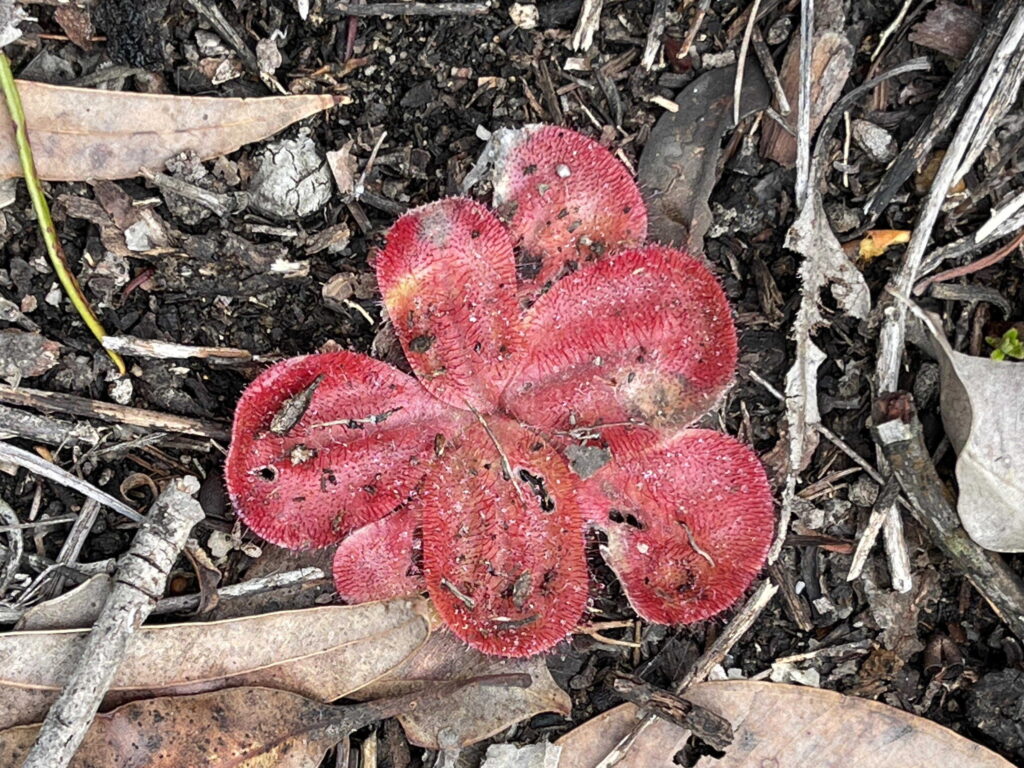
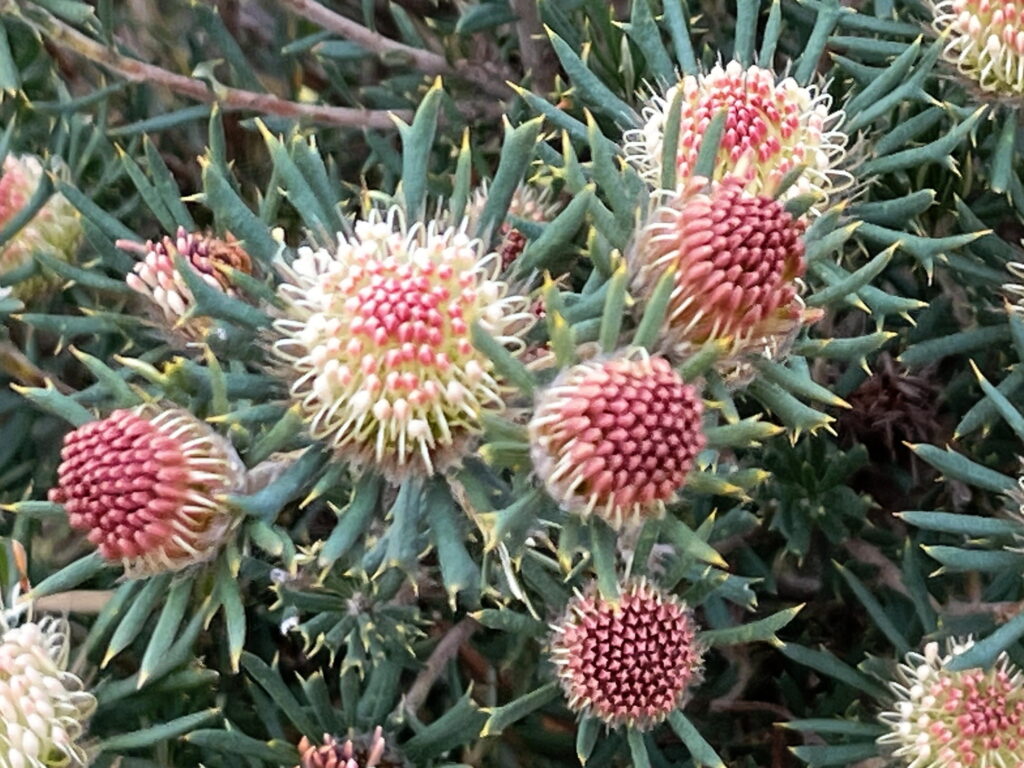

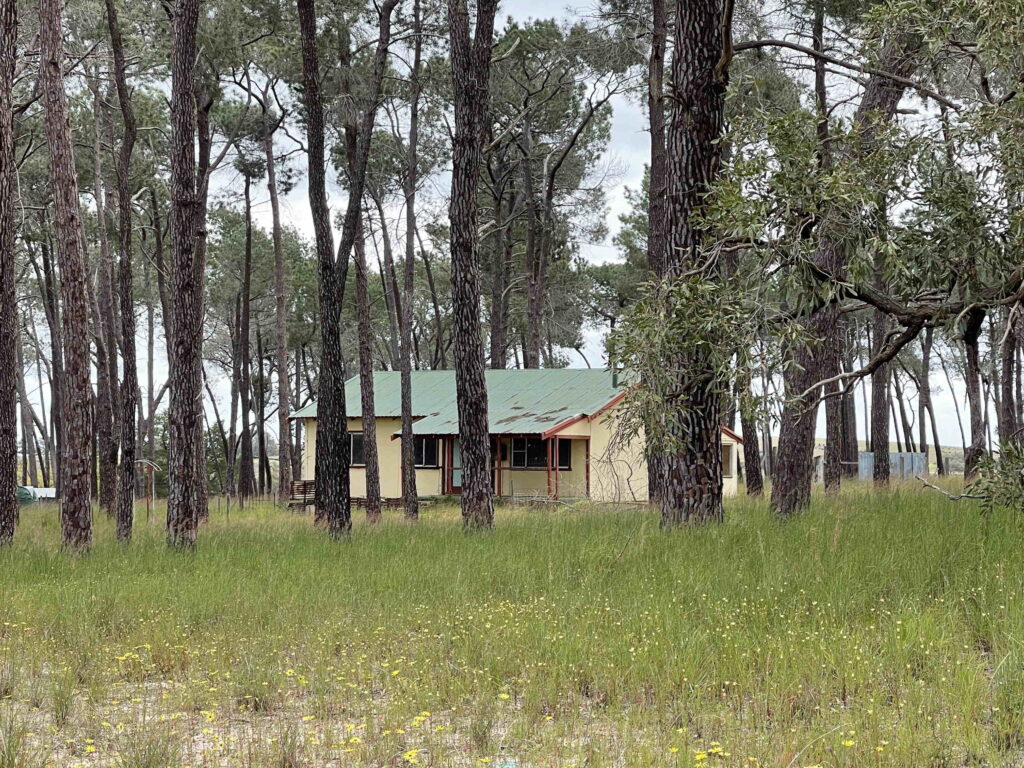
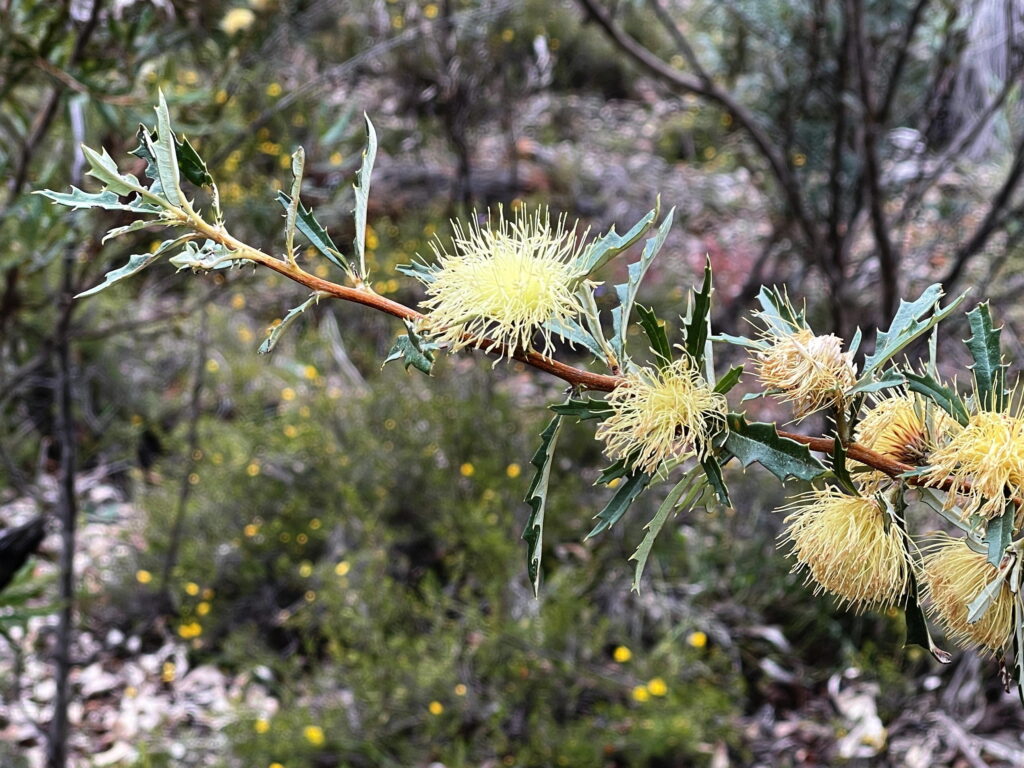
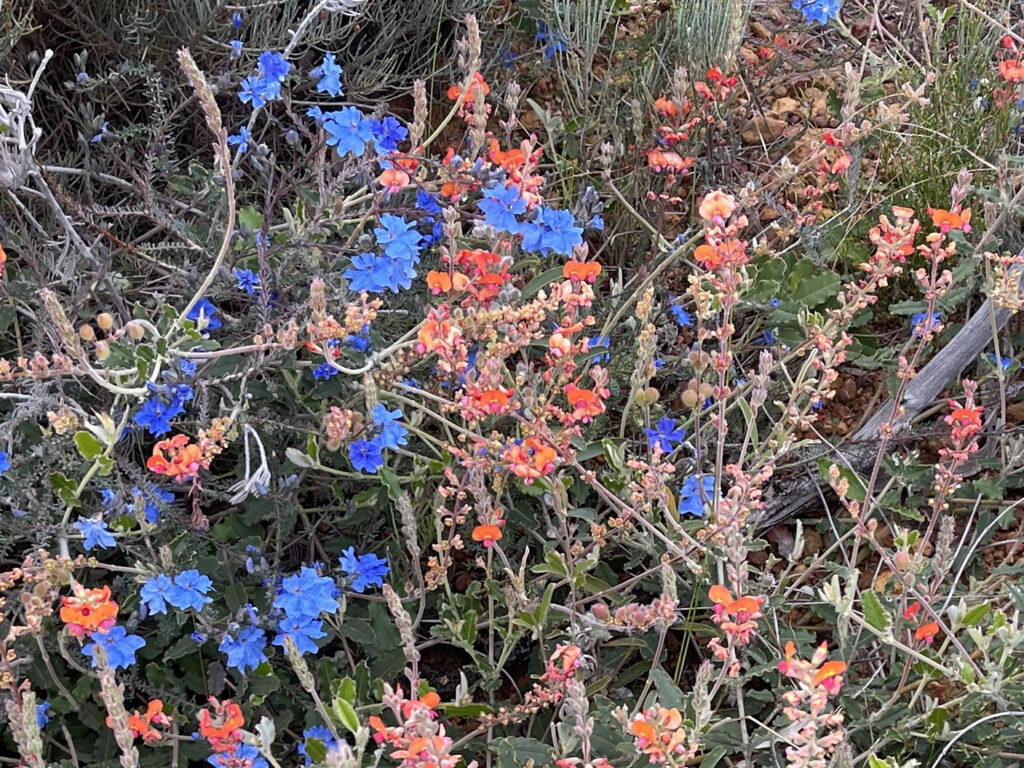
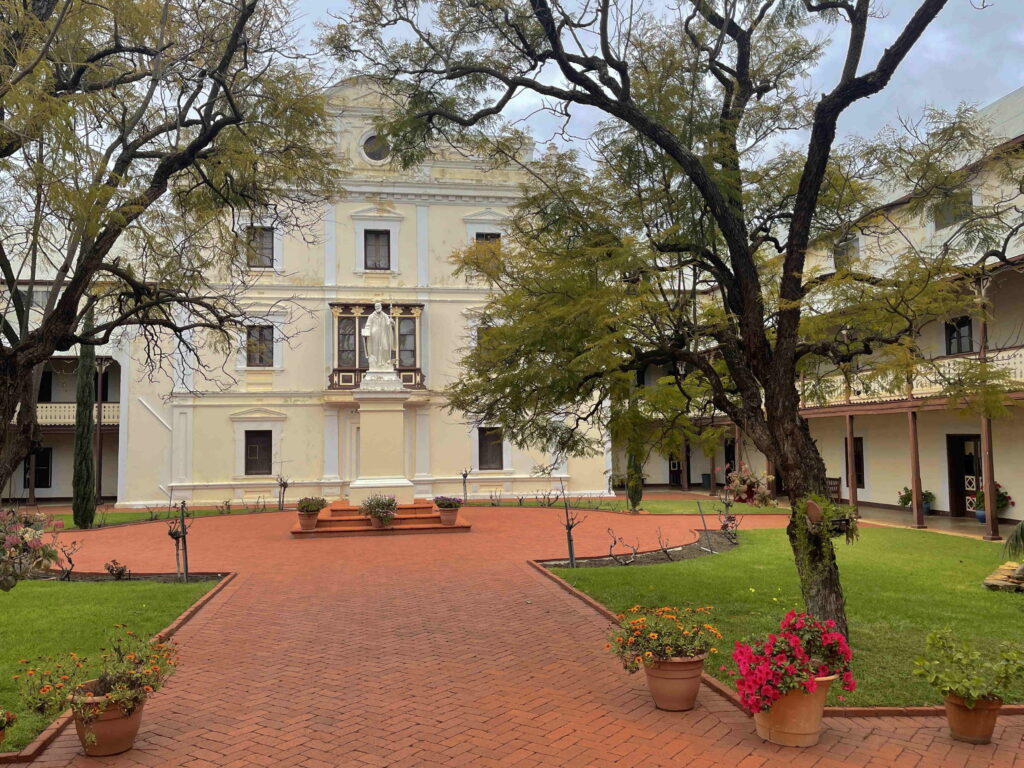
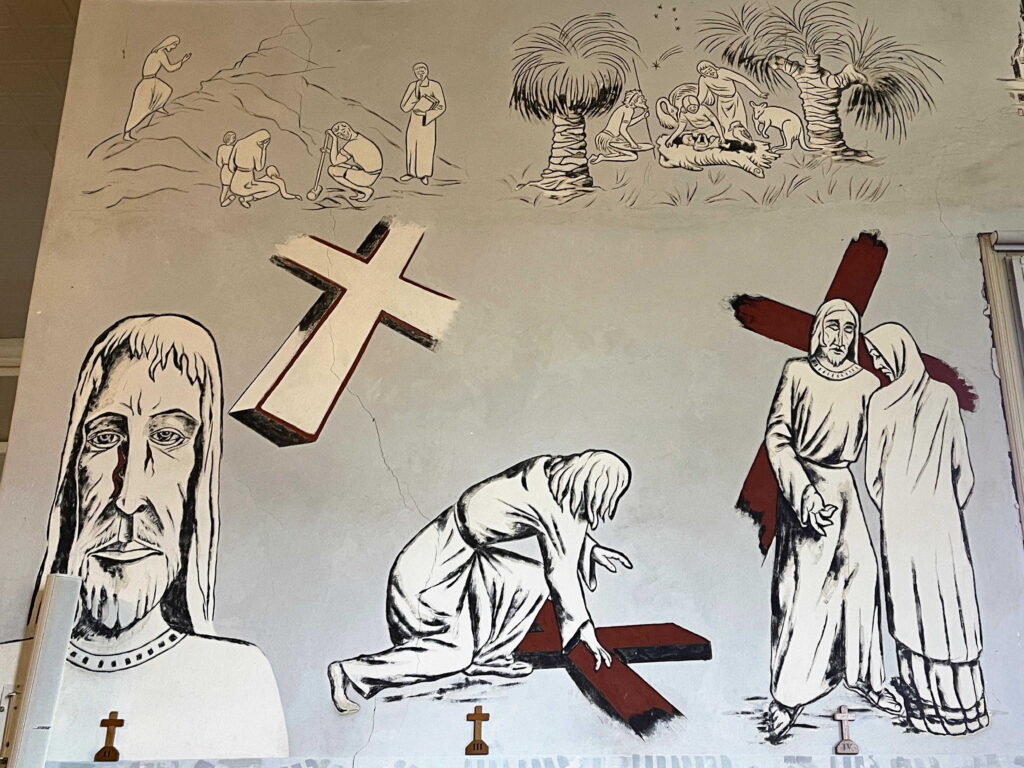
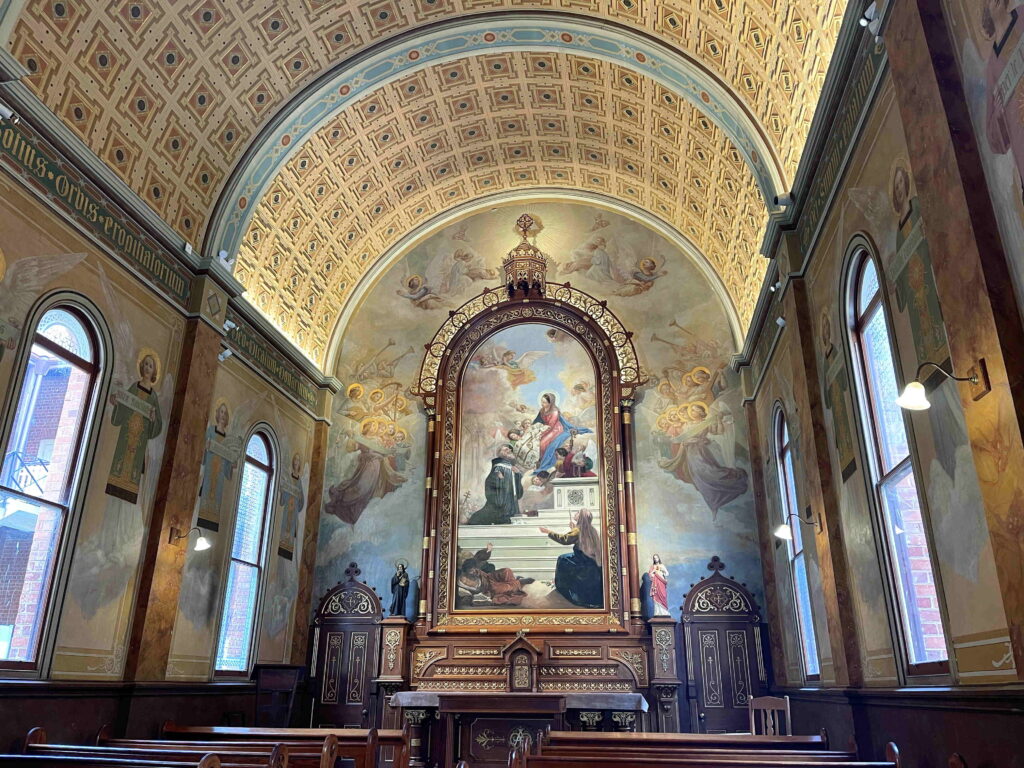
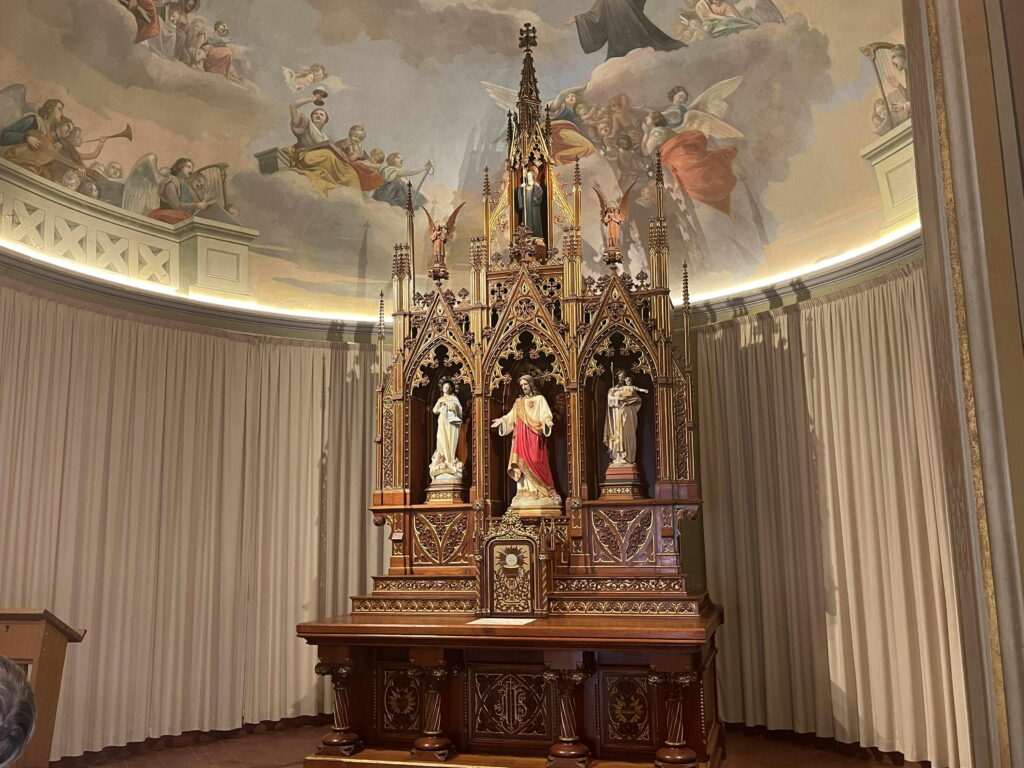
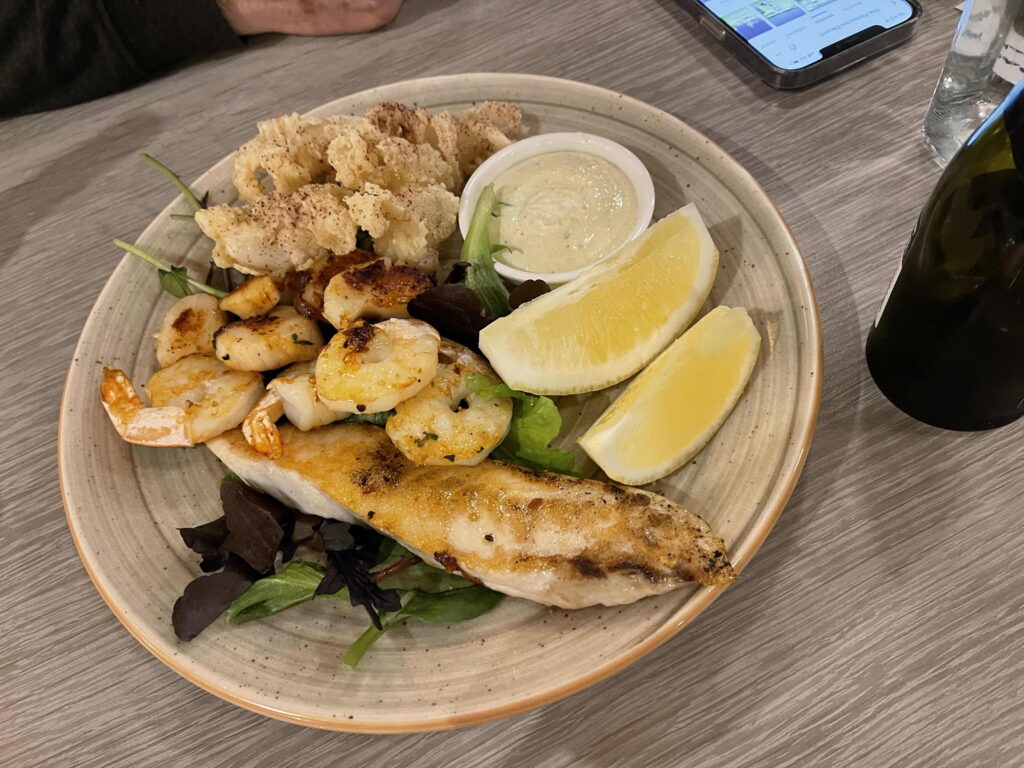
Thank you Sue for your wonderful descriptions of your travels. York will definitely be on our bucket list when next we visit WA. We have been to New Norcia on a couple of occasions and found it somewhat mysterious and fascinating from a historical perspective. You are certainly blessed with most wonderful wildflowers, am enjoying your beautiful photography. Kind regards Jennie and Trevor
Thanks Jennie. I know what you mean about New Norcia. Such a huge place, and hard to get your head around in terms of how it has worked (and still works) over the years. York is a great place. I’m very glad a friend recommended it as otherwise I’m pretty sure we wouldn’t have ended up there.
Just lapping up your travel experiences Sue and Len. A trip like yours to WA and wildflowers is on our shortlist for next Sept so I am very attentive and appreciative. Noting the culinary pleasures too! Have fun. Xx Diane
Excellent Diane, you’ll love it, if it makes its way to the top of the list! I’m guessing you will have more time than us, but whatever time you have you will enjoy I’m sure. I can point you to some websites when we catch up.
Thankyou Sue, for your posts and lovely photos. You are highlighting a much wider variety of wildflowers than I remember from a WA visit some years ago in Sept. I remember visiting the Pinnacles and New Norcia but not York (it’s buildings do look very beautiful!) or the other Aboriginal missions / sites of European connection you have visited. Graceful windmill footage! Great that the roads are good! Love to you and Len, Mary 💕😀🌸🏵🌼
Thanks Mary … some of these flowers are tiny. I should have added that in the description. Consequently. you wouldn’t see them unless you got out of your vehicle and peered at the ground. That dryandra (?) centre for example wouldn’t have been more than 2.5cm in diameter. The flat Drosera could be 5cm across but it is flat to the ground. And so on.
We are visiting The Pinnacles today. Interesting re York. From what people are saying here, and from its quietness, it sounds like it’s a hidden treasure!
So happy for you with your wildflower finds, in particular. Such a joy.
Marie
Thanks Marie … it absolutely is, isn’t it?
*chuckle* It is indeed a long way!
Thanks for sharing the photos of York, they bring back memories of my time there.
Glad to be of service Lisa!
I love seeing pictures from a part of the world I know nothing about. Those windmills, which you weren’t expecting, were huge, but then I’ve never stood up near one, so they all look large to me. The blades are more tapered and elegant looking than the ones in Palm Springs don’t you think? I looked closely at the pictures of the Benedictine mission to spy out similarities to the missions in California, but aside from obvious religious imagery, I couldn’t pinpoint anything. The California ones seem more rough-hewn. The streets of York–wow–so well maintained.
Thanks Carolyn, I love the questions! Yes, we reckon those windmill blades were larger, more tapered and more elegant than your Palm Springs ones AND than the Ones we have in our region, we saw some of those smaller ones here today so they seem to have both.
And yes, I also looked at this mission re similarities with the Californian ones and couldn’t find much either. This one at New Norcia is far more spread out I felt. I hadn’t thought rough-hewn but the styles are very different. New Norcia being mid to late 19 th century draws from a different architectural tradition. It also feels less Spanish than the Californian ones which I found interesting. Different influences I guess?